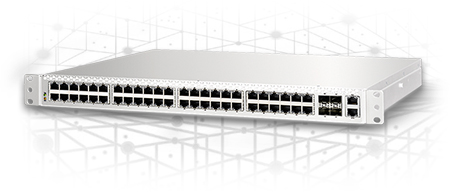White-box switch is nothing new to us. ODMs (original design manufacturers) have been building hardware for well-known vendors for many years. These vendors take the ODM hardware, install their operating system, and sell the unit as a bundle, often attaching a support contract. Until now many companies like FS are also getting into the game of producing white-box switches. White-box switches look just like any other switch, which are gaining increasing attention in next generation data center deployments, with many software-defined networking (SDN) startups offering solutions that include them. Enterprises are wondering how white-box switches will impact their data center plans. So what are white box switches?

A white box switch is a network switch which comes with an installed operating system. It can be used as a standard for the base of hardware system elements. In the case of operating systems, white box switches are generally preinstalled on the system, or can be installed later. Loading of the white box switch is not difficult and can be done in a short period of time. They are generally used with SDNs and particularly useful in terms of a networking approach where the control is generated from the physical infrastructure after decoupling it. It can act as an efficient open-source tool for management of materials and information on a device.
And the major difference between traditional black box switch and white box switch is that the first one can’t be programmed but the later one can be programmed. With white box switches, a service can be programmed by using switch controller like ONOS while traditional black box switch provides very limited features and every time when you need to update something you have to log into switches and then change the rules. The white box switches are flexible, fast and inexpensive, which is why many opt for this type of switch.
Although white box switches have been around for years, the adoption has been limited to niche companies that have large engineering departments. The rise of software-defined networking (SDN) has brought them into the public eye, though, as a lower-cost alternative to traditional network hardware. In fact, some of the early messaging around SDN revolved around using white boxes as a complete replacement for all network hardware. Besides, many improvements have been made in white boxes during the past few years. So if you ask me why it is the time of white box switches and why you should buy white box switches. Here I’ve got a number of reasons for you:
- 3-year ROI. A low-cost product can get ROI (return on investment) in less time and be replaced sooner. Faster hardware rotation equals more innovation/feature adoption.
- Software bugs. Vendors take months to locate, accept, and fix bugs, which has enormous impact on your business. With OCP-compliant white boxes, you can switch software and keep your business alive, or work around slow vendor support.
- Self-sparing. For some/most use cases, self-sparing is better than relying on vendor inventory. When products are cheap, you can hold inventory in your data center and bring MTTR down to hours instead of days.
- Cost and reliability. What the customer is often paying for is the software that rides on top of the hardware and the logo. From a reliability standpoint, white boxes are on par with brand-name systems because they are actually the same hardware.
- SDN. Move your operational focus from a vendor-specific CLI to an SDN solution. If you’re concerned about having multiple vendors to operate, then buy a SDN solution that is device independent.
- Network operations. Many engineers may ask questions like “Do I have to write my own operating system?” “How do I install a network operating system” “What do I buy?” when considering a white box switch. Now, they can be reassured because white boxes can now be purchased from mainstream network vendors such as FS and HP. Also, when one purchases a white box, those suppliers will offer the kind of technical support most engineers need.
White boxes are certainly ready for mainstream adoption. Although they aren’t for every use case, but in the right situation, like an SDN deployment, they can be as good or better than traditional switches with a much lower price point and equivalent operational costs. If you want to purchase one, you may visit FS.COM where you can find the best-value and cost-efficient white box switch.
Related article: What White Box Switch Means to SDN Deployment
